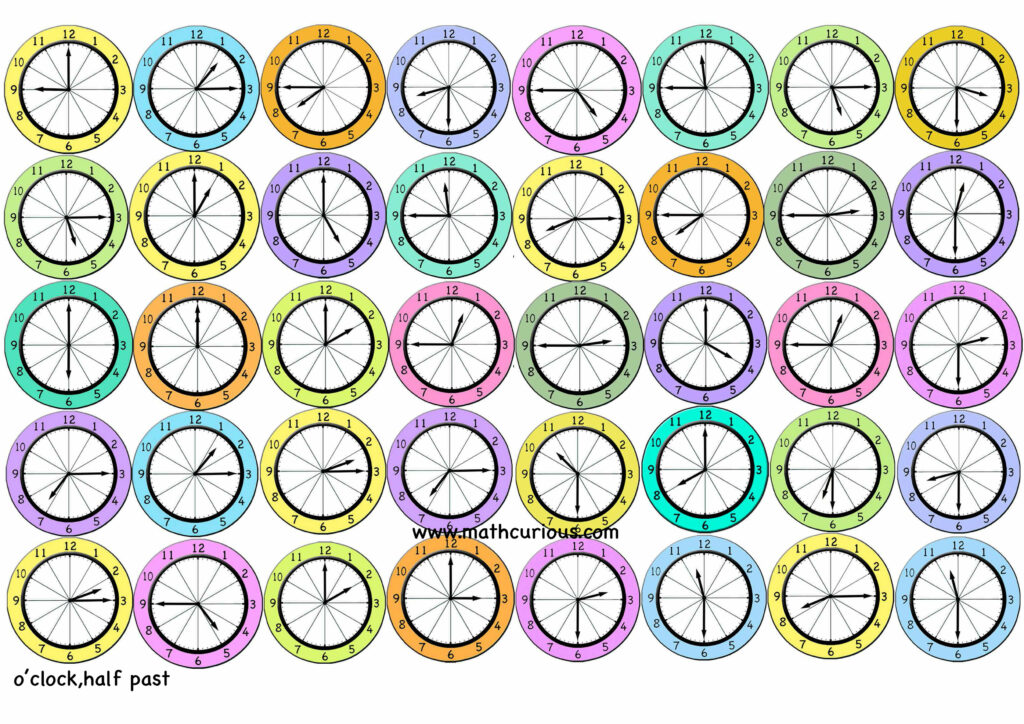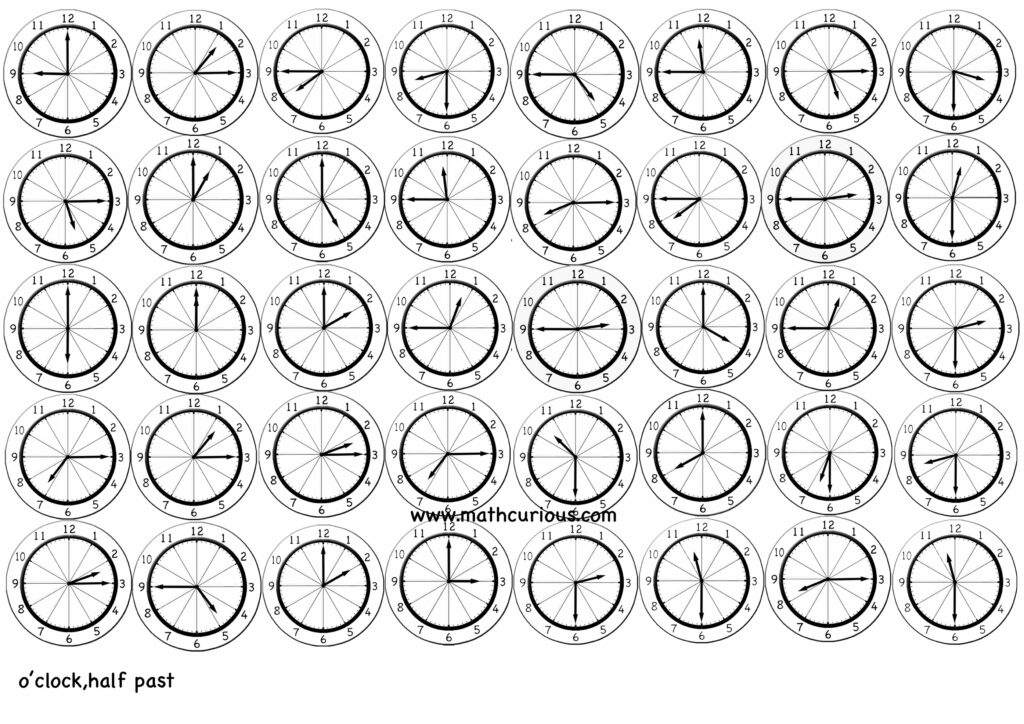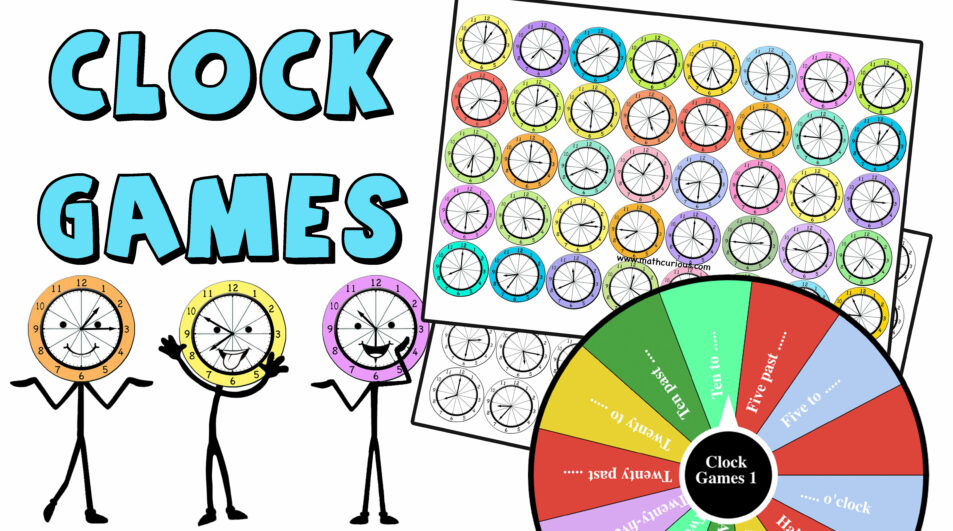This week is all about teaching time, and learning to read the clock. Today I am sharing a few clock games and some activity ideas. The games and activities come in print and google slides versions. The games include the concepts.
- o’clock
- half past
- quarter past and to
- 25 past and to
- 20 past and to
- 10 past and to
- 5 past and to
Check out Clock games version 2 here (am pm) Find more tips, games ideas and lots of print and digital activities for teaching time here. Teaching time, tips, activities, games, print and digital
Check out Clock games version 2 here
Material
- Printed game board
- color pencils or whiteboard markers if you laminate the game board
- print out of the spinner or 12 face dice.
How to play

Four in a row
The players spin the spinner and they find and mark a clock on the board that shows the indication they got. If for example, they get “A quarter to …” They find and mark any clock that shows “A Quarter to” …any hour. The first player to get/mark four clocks in a row horizontally, vertically, or diagonally is the winner. You can also play for the most four in a row for a longer game. This game helps students practice the minutes part of the clock. A simpler game board with only o’clock, half past, and quarter past and to is provided. Use the second spinner for this game.
Race Time
For this game, the players spin for an indication as above and then move by rolling 6 face dice. They can move in any direction (one at a turn) and try to land on a tile with the indication that the spinner gave. They mark the tile they got with their color. The player with the most tiles is the winner.
These games are for practicing the minutes part of the time. The hour on the clocks doesn’t really matter. The players take turns spinning the spinner. They get one of the indications. If you don’t want to use the spinner you can roll 12 face dice and assign each spinner indication to a number.
How to build the spinner.
I decided to include a spinner in this game because spinners are fun. You can make a spinner at home. Cut and paste the template given on a piece of card stock or cardboard or even a paper plate. To make the spinner you can use a paper clip, a popsicle stick, or a piece of cardboard (shaped like an arrow) attached with a brad (paper fastener) and a washer, or a push pin in the middle. You can also by a spinner, or use the digital ones below.
More ideas
You can use the board for different games. For example, you can play a speed game in pairs. Spin the spinner and see who can find the right clock first. You can also roll a dice and move on the board, (starting from the left up corner) then write the word form of the time shown on the clock.
Use the board as a practice activity. Ask your students to mark/color a specific concept, “Color the clocks that show Half past ….” Black and white pdfs included.

Find the free pdfs for one of the game boards below. (o’clock, half-past, quartet to and past)
Find the premium version with
- the game boards to practice o’clock, half past and quarters
- the gameboards to practice other times like 10 past, 20 to.. 25 past and more
- the google slides version for both game boards with digital spinners
Check out these clock cards for memory games, centers, and more.
We hope that you find these games useful.
Check out our collection of print and digital activities (task cards) that includes
- Explanations for each concept, o’clock, half past, quarter past and to, minutes, seconds,
- Understanding the clock- placing the numbers for hours and minutes.
- Reading and writing time to the hour.
- Reading and writing time to the half-hour.
- Reading and writing time to the quarter-hour.
- Reading and writing time to the nearest 5,10,25,20 minutes.
- seconds
- discussions
- puzzles
and our second collection of print and digital activities that includes:
- Explanations
- AM/PM activities
- 24-hour clock activities
- Starting with elapsed time-adding time, time before and after
- Finding times on the number line.
- Measuring the elapsed time between clocks.
- Word problems – measuring elapsed time in parts, finding the end time.
- Challenge problems


